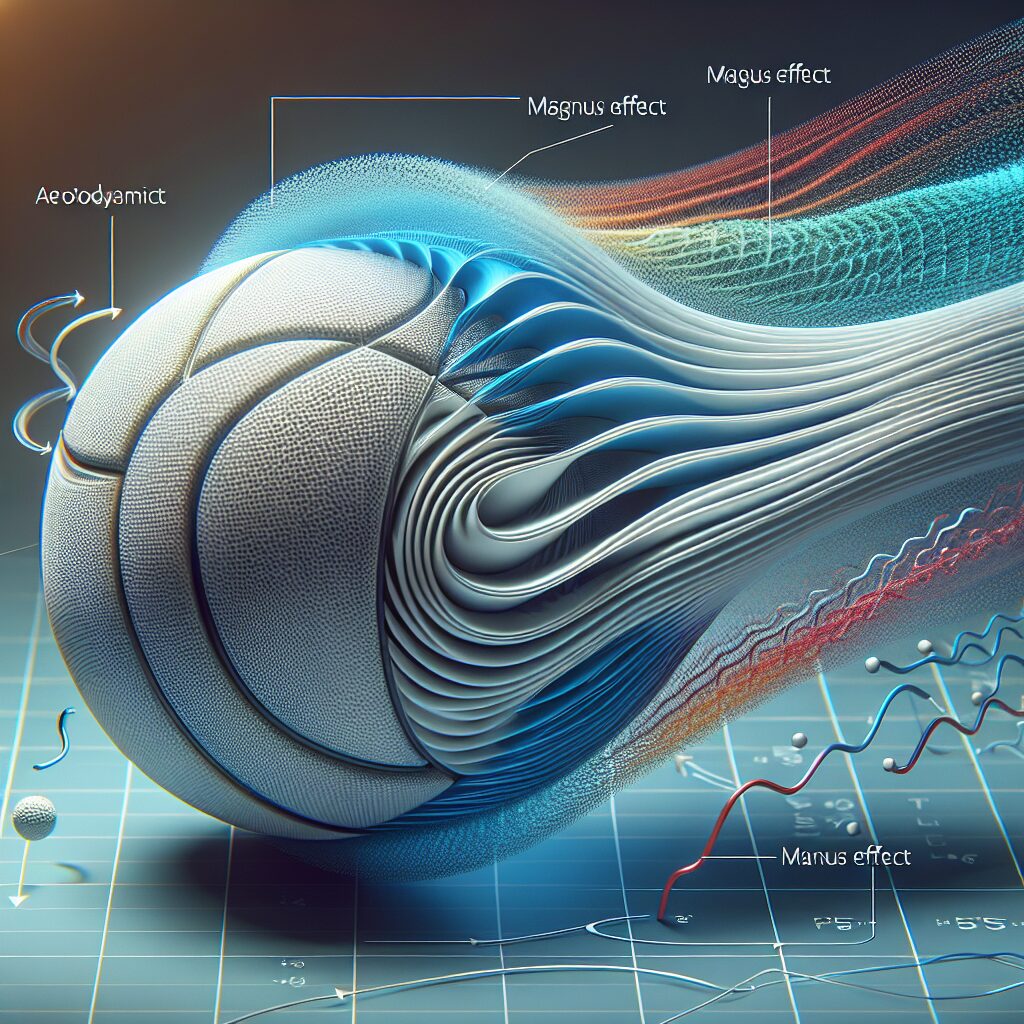Angular Momentum in Ball Impact: Spinning Dynamics
Angular momentum is a fundamental concept in physics that plays a pivotal role in understanding the dynamics of spinning objects. When it comes to ball impact, a spinning ball introduces an extra layer of complexity, resulting in fascinating effects that have intrigued scientists and athletes alike. As the ball collides with a surface or another object, its angular momentum interacts with the surrounding environment, giving rise to unexpected trajectories and spin-induced behaviors.
One remarkable feature of angular momentum in ball impact is the Magnus effect. Named after the German physicist Heinrich Gustav Magnus, this phenomenon explains how a spinning ball deviates from its expected trajectory due to the differences in air pressure on its top and bottom surfaces. The resulting lift force can cause a soccer ball to curve dramatically, leaving defenders and goalkeepers in awe. In addition, angular momentum also affects the bounce of a spinning ball. The spin can either enhance or reduce the rebound efficiency, leading to variations in the overall ball behavior upon impact.
Moving forward, let us delve into the key takeaways of this article, where we explore the intricate relationship between angular momentum and ball impact. We will discuss the various factors that influence the magnitude and direction of angular momentum, such as the spin rate, ball shape, and surface characteristics. By understanding the principles underlying these dynamics, readers will gain valuable insights into how to optimize their performance when dealing with spinning objects.
Key Takeaways
1. Angular momentum plays a crucial role in ball impact dynamics, influencing the resulting spin and direction of the ball.
2. The spin of the ball at impact is determined by both the angular momentum of the ball itself and the angular momentum generated by the player’s stroke.
3. Understanding the principles of angular momentum can help players manipulate the spin of a ball to gain a strategic advantage in sports like tennis or golf.
4. The collision between the ball and the racket or club can transfer angular momentum from the player to the ball or vice versa, altering the final spin of the ball.
5. Factors such as the angle of impact and the moment of inertia of the object can significantly impact the resulting spin and direction of the ball, highlighting the importance of precise control during ball impact.
What is the Significance of Angular Momentum in Ball Impact: Spinning Dynamics?
Understanding Angular Momentum
Angular momentum is a fundamental concept in physics that plays a crucial role in various phenomena, including ball impact and spinning dynamics. It refers to the rotational motion of an object around a fixed axis, influenced by both its mass and rotational velocity. In the context of ball impact, angular momentum allows us to comprehend the intricate dynamics that occur when a spinning ball collides with another object.
The Role of Angular Momentum in Ball Impact
When a spinning ball collides with another surface or object, the conservation of angular momentum comes into play. This principle states that the total angular momentum before the impact remains constant during and after the collision. Consequently, the spinning dynamics of the ball significantly impact the outcome of the collision.
Impact on Trajectory
The angular momentum of a spinning ball affects its trajectory upon impact. Depending on the direction and magnitude of the angular momentum, the ball may experience a deflecting force, resulting in a curved or swerving trajectory. This phenomenon is commonly observed in sports like tennis or baseball, where spin is intentionally imparted to manipulate the ball’s path.
Transfer of Angular Momentum
During ball impact, the angular momentum can be transferred from the spinning ball to the object it collides with. This transfer can influence the rotational motion of the object and its subsequent response to the impact. Understanding the transfer of angular momentum is crucial for various applications, such as designing sports equipment or studying the mechanics of collisions in physics.
Factors Affecting Angular Momentum in Ball Impact
Several factors come into play when considering the angular momentum in ball impact scenarios. The following aspects significantly impact the spinning dynamics and outcomes of such collisions.
Ball Spin
The initial spin of the ball before impact greatly affects its angular momentum. Whether it is topspin, backspin, or sidespin, the direction and speed of the spin influence the resulting collision. Different spins can lead to variations in the angular momentum transferred or absorbed by the object being struck.
Impact Point
The location where the ball makes contact with another object is crucial in determining the angular momentum transfer. Depending on the impact point’s distance from the ball’s center of mass and its rotational axis, the resulting angular momentum change may vary. This emphasizes the significance of an accurate strike point in sports like golf, billiards, or cricket.
Object Properties
The properties of the object being struck also play a role in the angular momentum dynamics during ball impact. Factors such as mass, shape, and rotational inertia influence how the object responds to the collision and the resulting changes in its angular momentum. These properties become particularly important in scenarios involving objects with complex shapes or uneven mass distributions.
Guides for Maximizing Angular Momentum in Ball Impact: Tips for Optimal Spinning Dynamics
- Choose the Right Spin: Experiment with different spin techniques to understand how they affect the angular momentum transfer during ball impact.
- Focus on Impact Accuracy: Consistently aiming for the optimal impact point maximizes the efficiency of angular momentum transfer.
- Understand Object Properties: Study the properties of the objects involved in the collision to anticipate their responses and adjust the spinning dynamics accordingly.
- Master Spin Generation Techniques: Practice generating various types of spins to gain better control over the resulting angular momentum in ball impact situations.
- Analyze Trajectories: Analyze the curvature and swerving of the ball’s trajectory to evaluate the effectiveness of different angular momentum strategies.
Frequently Asked Questions
What is Angular Momentum in the context of ball impact?
Angular momentum refers to the rotational motion of an object around its axis. In the context of ball impact, it is the measure of the spinning dynamics that occur when a ball collides with another object or surface.
How is angular momentum calculated in ball impacts?
Angular momentum can be calculated by multiplying the moment of inertia by the angular velocity. Moment of inertia is the measure of an object’s resistance to changes in rotation, and angular velocity refers to the rate at which an object rotates around its axis.
What factors influence the angular momentum in ball impact?
Several factors influence the angular momentum in ball impact, including the initial angular velocity of the spinning ball, the moment of inertia of the ball, and the nature of the collision (e.g., elastic or inelastic).
Can angular momentum be transferred between objects during a ball impact?
Yes, angular momentum can be transferred between the ball and the object it collides with. Depending on the nature of the collision, angular momentum can either be conserved or changed during the impact.
What are some practical applications of understanding angular momentum in ball impacts?
Understanding the spinning dynamics and angular momentum in ball impacts is crucial in various fields such as sports, engineering, and physics. It helps in the design of equipment, improving sports techniques, and studying the impact of collisions in different scenarios.
Do different ball surfaces affect angular momentum in ball impacts?
Yes, different ball surfaces can affect angular momentum in ball impacts. Surface characteristics such as friction, texture, and grip can influence the initial angular velocity and moment of inertia of the ball, thus affecting the resulting spinning dynamics.
How does angular momentum affect the trajectory of a spinning ball after impact?
Angular momentum plays a significant role in determining the trajectory of a spinning ball after impact. The direction and magnitude of the angular momentum determine the direction and speed of the spin, therefore affecting the path the ball takes.
What happens to angular momentum if the ball collides with a wall or other stationary object?
When a ball collides with a wall or another stationary object, the angular momentum of the ball can change depending on the nature of the collision. In elastic collisions, angular momentum is conserved, while in inelastic collisions, it can be partially or completely transferred to the wall or object.
Are there any safety considerations when studying angular momentum in ball impacts?
When studying angular momentum in ball impacts, it is essential to consider safety precautions. Depending on the size and speed of the objects involved, collisions can have significant force and energy, potentially leading to injuries. Protective equipment and controlled environments should be used when studying or experimenting with ball impacts.
Where can I find more resources or research on angular momentum in ball impacts?
There are various resources and research papers available on angular momentum in ball impacts. Online scientific journals, academic databases, and sports science publications are good starting points to explore this topic in more depth.
Final Thoughts
Understanding the angular momentum in ball impacts and spinning dynamics is essential for a comprehensive understanding of the physical principles involved. The interplay between rotational motion, moment of inertia, and the transfer of angular momentum provides valuable insights into various practical applications.
Whether it’s analyzing the spin of a tennis ball in professional matches, designing more efficient golf swings, or examining the impact of ball collisions in engineering, angular momentum plays a critical role. By further studying this topic, researchers, athletes, and scientists can continue to unlock new discoveries and advancements in their respective fields.




